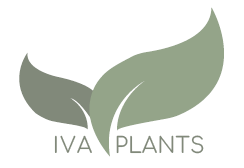The first detailed description of 23 medicinal herbs and their cultivation methods, in verse, was left by Abbot Walahfrid Strabo of the Benedictine monastery in Reichenau (Germany) in the 9th century. The Benedictines played a key role in spreading many medicinal herbs across Europe that had previously been found only in the Mediterranean and the Middle East.
This tradition led to the European practice of creating flower gardens at homes, which, from the 16th to the 18th centuries, was encouraged by many rulers who prescribed the cultivation of medicinal herbs to citizens and peasants alike.

Moving to England, until the mid-19th century, most medicines were of plant origin, requiring pharmacists to have a profound knowledge of botany. Apothecary gardens, typically established at universities, became significant educational and research centres. The Chelsea Physic Garden, founded in 1673 by the Society of Apothecaries of London, became one such place, despite the university tradition.
Finding a head gardener for this garden took almost a decade, but ultimately the choice fell on John Watts, a member of their own ranks, who developed a collaboration with Paul Hermann, a professor of botany at the University of Leiden. Since then, the international exchange of seeds has become a routine practice, and today, the Chelsea Physic Garden’s collection exceeds 4500 species, still predominantly comprising herbs and medicinal plants.

In 1713, the Chelsea estate was purchased by Hans Sloane, who later (in 1722) granted the apothecaries the right to use the land for a symbolic rent (for £5 a year), on the condition that it remains an apothecary garden. This condition is upheld to this day, with the annual rent of five pounds still being paid to Sloane’s descendants.
Sloane was grateful to the apothecaries for their contributions to the advancement of botany and medicine, and upon his death, he bequeathed his extensive collection and library to the nation. This generous gift laid the foundation for the British Museum and, over time, the Natural History Museum of London, continuing the tradition of knowledge exchange and the preservation of the history of natural medicine.







I first came across IVA Plants and Alex their founder at my local monthly Artisan market and decided to try the Sleep Well tea and the Rose Garden Tea. I was very impressed with the lovely aroma and the quality of the ingredients. There is an online shop but I thought I would head down to the market again to stock up. This time I bought dried Chamomile flowers, Rose buds and a Houjicha roasted greentea that she suggested for me as it is lower in caffeine. I would highly recommend all of the purchases I have made.